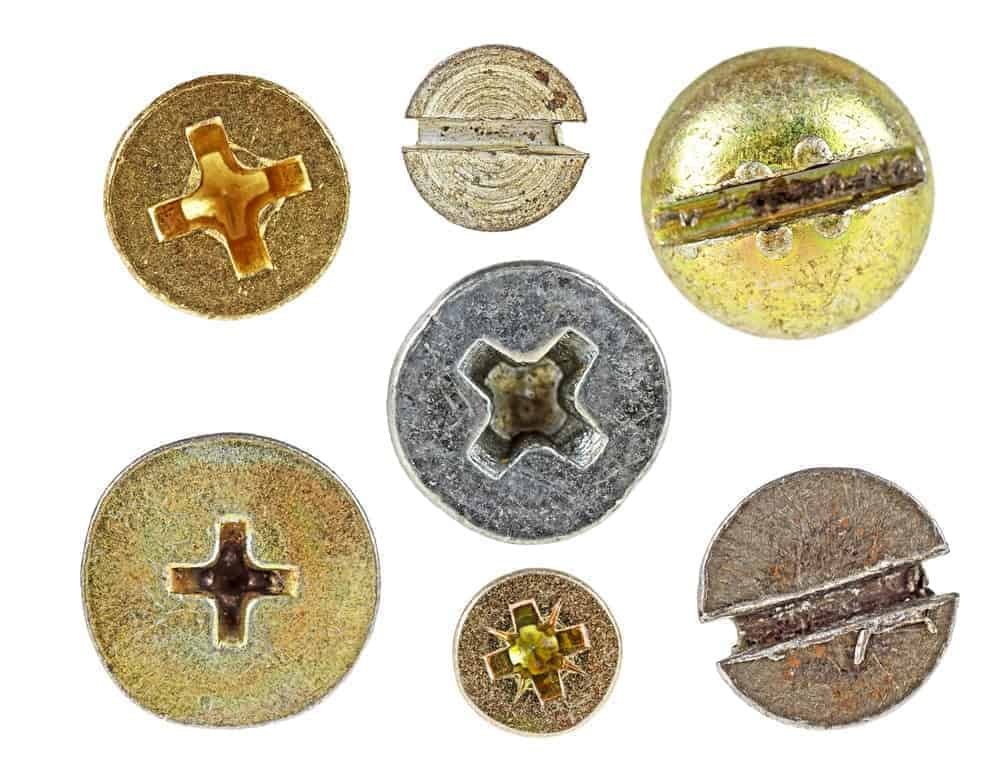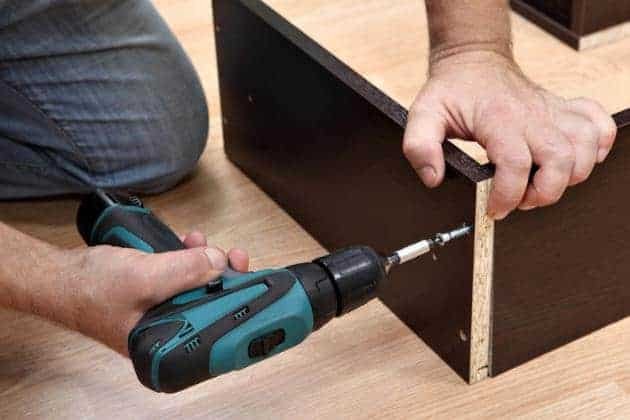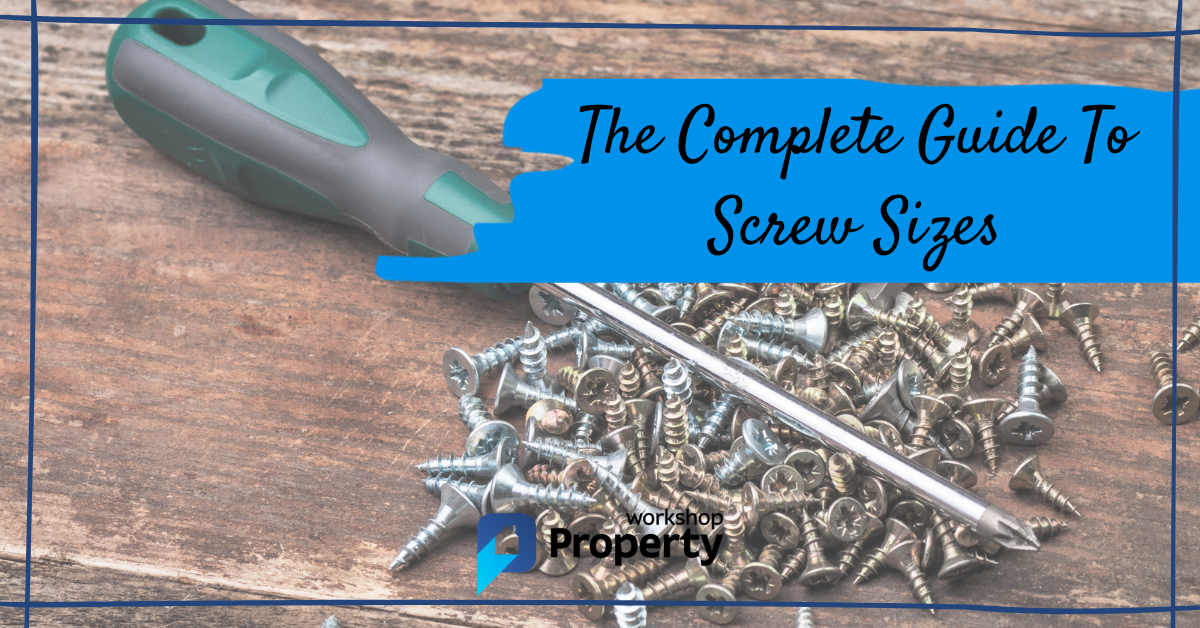This short but comprehensive guide explores the different types of screws, including their size and head type. You will also learn the difference between metric and imperial screw sizes.
By the end of this guide, you can decide which screw you need for the job you’re tackling.
Types of Screws in the UK
Screws are categorised by the type of material they’re suitable for fastening.
Some screws are sold as ‘multi-purpose’, so double-check these screws are ideal for the material you’re fastening.
The most common types of screws and their characteristics are listed below.
- Wood: Has a pronounced thread (the raised line that spirals the length of the screw) and a sharp point to pierce wood easily.
- MDF: As MDF is prone to splitting, MDF screws are a particular version of a wood screw that is self-tapping (see abbreviations below).
- Drywall: These screws are self-tapping and have a counter-sink head, so they sit just under the surface of a drywall panel, helping to maintain a smooth surface.
- Masonry: Do not have pointed tips. Therefore, a hole must be pre-drilled in the concrete or brickwork before inserting masonry screws.
For a comprehensive visual guide to screw types, check out this PDF from Bolt Depot.
Screw Heads

Screw heads have an indentation at the top for inserting a screwdriver.
A slotted head is where the indentation goes straight across. Slotted heads are rarer these days, as the indentation is more likely to be a cross shape.
If the cross shape has another shallower cross running through it, it’s a Pozidrive head screw. Otherwise, the screw head is a Phillips.
Phillips screwdrivers are used for both pozidrive and phillips heads, but it’s better to use the corresponding screwdriver for the type of screw used. Screw heads can be flat, domed, or slightly raised.
Flat screws are known as ‘countersunk’ because they sink into the material and sit flush with the surface.
Domed screws, sometimes called ’rounded’, have a pronounced dome on top and are used for decorative surfaces such as mirrors.
Raised screws are, confusingly, flat on top, but the head is thicker than flat screws, so they do not sit flush. They’re often used for decorative surfaces, such as light switch covers.
Metric Screw Sizes vs Imperial Screw Sizes
Metric screws are measured by the diameter and the length, both in millimetres.
Imperial screws are measured by gauge and length, the latter of which is measured in inches. Imperial gauge refers to the diameter of the screw but is an assigned number, not a measurement. The higher the gauge number, the larger the screw.
Screw Sizes Chart — Metric to Imperial Conversion
You can convert metric and imperial sizes using the handy conversion charts below. All sizes are approximate and meant as a guide only.
Diameter/Gauge Conversion
| Metric Diameter (mm) | Imperial Gauge (g) |
| 2.5 | 3 |
| 3.0 | 4 |
| 3.5 | 6 |
| 4.0 | 8 |
| 4.5 | 9 |
| 5.0 | 10 |
| 6.0 | 12 |
Length Conversion
| Metric Length (mm) | Imperial Length (inches) |
| 12 | 1/2″ |
| 16 | 5/8″ |
| 20 | 3/4″ |
| 25 | 1″ |
| 30 | 1 1/4″ |
| 35 | 1 3/8″ |
| 40 | 1 1/2″ |
| 45 | 1 3/4″ |
| 50 | 2″ |
| 60 | 2 1/2″ |
| 70 | 2 3/4″ |
| 80 | 3″ |
| 90 | 3 1/2″ |
| 100 | 4″ |
| 120 | 4 3/4″ |
| 150 | 6″ |
| 160 | 6 1/2″ |
| 180 | 7″ |
Acronyms and Abbreviations
- ST: Self-Tapping. You don’t need to pre-drill a hole to fit these screws as they cut their thread as they’re screwed in.
- TT: Twin Thread. So-called as they have two threads running the length of the screw. Often stronger than single-thread screws.
- TFT: Twin Fine Thread. Same as TT, but the thread is wound tighter, so it screws in slower and can be adjusted. TFTs are better for use with thin materials like metal.
- ZP: Zinc Plated. They are coated with zinc to help make them rust-proof, making them suitable for outdoor use.
- ZYP: Zinc and Yellow Passivated. As ZP but with an extra passivation layer, which improves corrosion protection.
How To Pick The Best Screw for the Job

Your DIY store should have labelled screws according to what material they can be used for (wood, masonry etc.).
You then need to consider the screw length. For example, if you are screwing together two pieces of wood to make a box at right angles to each other, and the wood is 24mm thick, your screw length needs to be at least 48mm long. This 48mm figure includes 24mm to pass through the first piece of wood and another 24mm to anchor firmly into the second piece.
Pro Tip: The Spruce recommends applying soap to the length of the screw to reduce friction as it enters the material
The type of screw head you choose depends on the finish you want. E.g. for a smooth, flat finish, use flat head screws rather than raised ones.
Final Thoughts
I hope this guide has helped choose the right screw for your job. By now, you should understand the following:
- How different materials require different screws
- When to use a raised screw instead of a countersunk screw
- How metric sized screws compare with imperial

